Peet's Coffee, the father of Starbucks, wants to get involved in China's fine coffee market?
For professional baristas, please follow the coffee workshop (Wechat official account cafe_style)
In recent days, the circle of friends in the coffee industry has circulated an H5 recruitment page released by Peet's:
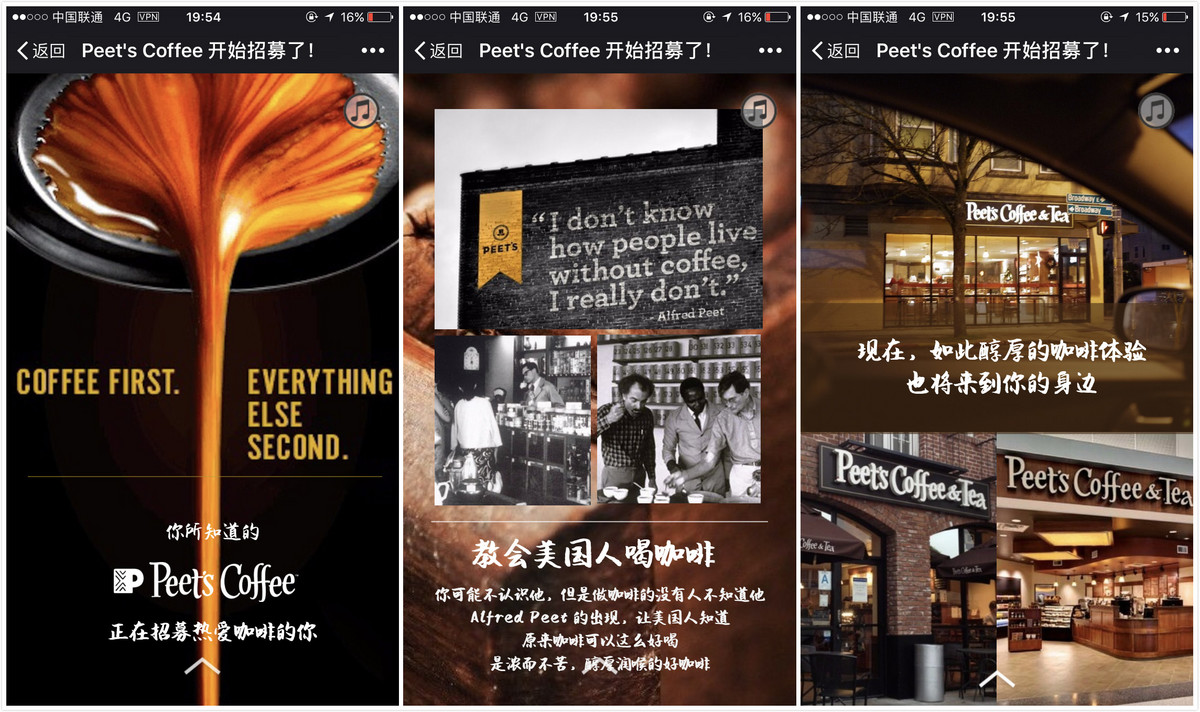
Peet's briefly introduced his history and origin, and revealed that he would open China's first flagship store in Shanghai, recruiting barista, senior barista, trainee duty, duty supervisor and other positions.
Although the details are still in the confidential stage, the news that Peet's will open a store in China is probably not false.
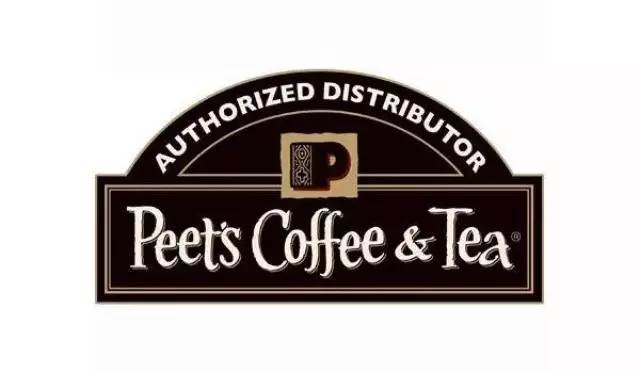
While Peet's Coffee & Tea isn't nearly as big as Starbucks, it currently has 200 stores, 4000 employees, and a market cap of $636 million in 2011, just 2.3% of Starbucks 'market cap for the same period. However, Peet's status in the coffee world is still obvious.
Peet's has grown rapidly in recent years, acquiring a majority stake in Intelligentsia Coffee and Stumptown in 2015, both of which are leaders in the American fine coffee wave (the third coffee wave). Peet's ambition has long been exposed, choosing to enter the Chinese coffee market at this time, just like Starbucks, rushing to the Chinese coffee market, and should also be forced by the weakness of the European and American markets.
Peet's status in the Jianghu
In the past, the United States has always had nothing to do with fine coffee.
From "cowboy coffee" in the 19th century to "dishwater coffee" after the end of World War II, Europeans ridiculed the United States for not knowing coffee and coffee culture. However, after 1966, the United States quietly set off a decades-long wave of fine coffee, which has not yet stopped.
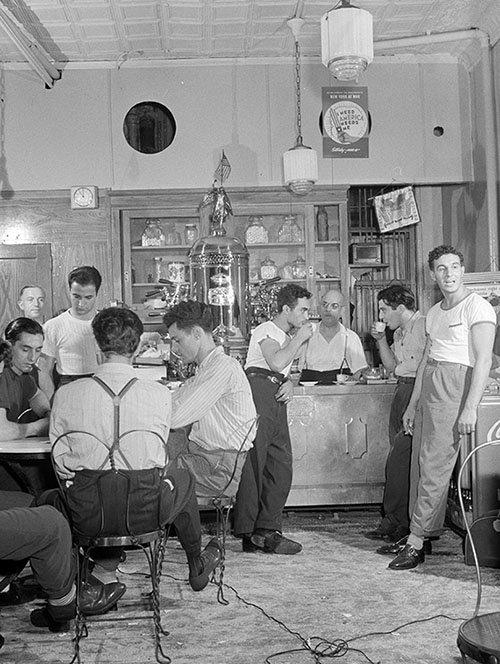
Dutch-born baker Alfred Peet, whose Peet's Coffee & Tea is hailed as the birthplace of American re-baked fashion and espresso, is taking the lead.

Alfred bitt (Alfred Peet)
George George Howell, a master of shallow roasting on the east coast of the United States and one of the founders of the "extraordinary Cup" international boutique bean auction, was an early believer in Peet's re-roasted coffee, then betrayed Pitt's re-roasting style and embraced the shallow roasting style and attacked the violence of re-roasting coffee, igniting a great debate between deep-roasting and shallow roasting and sparking sparks of boutique coffee.
We can say that Pitt is the godfather of fine coffee in the United States. without the Peet's Coffee he founded, there would be no Starbucks today, let alone George Hall's own shallow roasting discussion, and there would be no "extraordinary cup" international auction for boutique coffee. Peet's Coffee & Tea, a founding store in Berkeley, California, is the most legendary grandparent cafe in the United States and is still a pilgrimage for coffee players around the world.
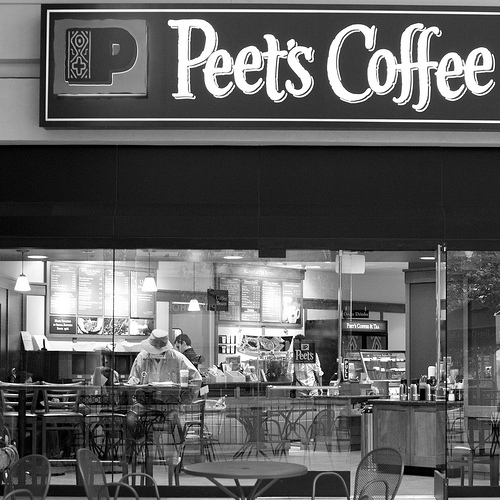
Love and hate between Starbucks and Peet's
Three Starbucks founders Jerry Baldwin (Jerry Baldwin), Gordon Pork (Gordon Bowker) and Zev Siegl were enlightened in Peet's. The trio also learned to roast under Pitt's own training, and in 1971 they moved to Seattle to open Starbucks Coffee. The beans in the first year of the store were still baked by Peet's, and the next year they set up Starbucks' own roaster, where Baldwin took over the roasting task.

Starbucks 'three founding fathers are Peet's "fans"
Bite is stubborn, hands-on, refuses to delegate power, is strict with employees, but poor communication, staff overload, turnover tide has not stopped. In 1979, when he was 60 and tired of playing, he sold Peet s to his partner Sal Bonavita for a high price. Peter's apprentice, Starbucks owner Baldwin, regrets missing out on buying Master's store.
In 1984, Baldwin learned that Peet's was about to sell again, and this time he took on debt to buy Peet 's back from Bonavita for $4 million and merge it with Starbucks. But the culture of the company was incompatible, and the two sides clashed, and Howard Schultz, who was then the head of Starbucks marketing, left because of his disagreement with Baldwin's store concept.

In 1987, Howard Schultz found venture capital to buy Starbucks for $3.8 million (the deal includes trademarks, bakeries and six stores, but not Peet's). Baldwin abandoned Starbucks and traveled to San Francisco to concentrate on running the more famous and more prestigious Peet's, and continued to promote Pitt's European enthusiasm.
Since then, Starbucks has been separated from Peet's and has become the biggest rival to each other. The triangular relationship between Pitt and Baldwin and Schultz, as well as the feud between Starbucks and Peet's, has always been a topic in the American coffee industry.
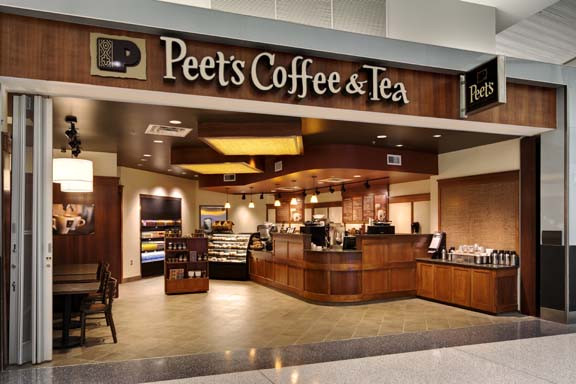
The rise of Peet's
background of times
The rise of Peet's in the 1960s has the inevitability of its background. After World War II, coffee consumption in the United States increased year by year. In order to expand profits, roasters at that time became shallower and shallower. On the one hand, they could save man-hours and fuel costs, and on the other hand, they could reduce the weight loss ratio of cooked beans. At that time, coffee beans were in a hurry to be baked at the beginning of the explosion, and the weight loss ratio was less than 9%. Compared with the deep-baked beans baked after the second explosion, the weight loss ratio of shallow-baked beans was as high as 18%, and the profit of shallow-baked beans was at least 10% more than that of deep-baked beans. This is the trick used by unscrupulous people in the early days to make money by shallow baking, and even more seriously mixed with a large number of sun-dried beans. You can imagine how bad the coffee was at that time. No wonder it was ridiculed as "dishwashing water coffee".
But consumers have long been accustomed to half-cooked sour bitter coffee, in order to be more palatable, had to add more water dilution, so light as water thin coffee, is the popular taste at that time. As long as caffeine is refreshing, no matter whether the coffee looks like sour or sour water. This is to blame that in order to preserve convenience during the war, the coffee allocated to front-line officers and soldiers by the US military was either very lightly baked or instant coffee. These people enter society after retirement, naturally bringing the over-diluted taste of light coffee into the workplace.
During the decade or two after the war, Folgers and the Hills Bros brothers, big American roasters, made great efforts to promote very lightly roasted canned coffee beans (powders). Over time, people did not know what fresh coffee was, and became accustomed to stale coffee, which tasted as good as sugar and cream. Rotten coffee is a hangover after the war, and it is also a phenomenon in Europe. Because the people are fully engaged in reconstruction, there is no way to talk about eating and drinking. The American baking industry only wants to enjoy huge profits and does not have the moral courage to denounce this unhealthy trend of shallow baking in disguise.
Alfred Peet and Peet's
Pitt's father was a coffee roaster who practiced in the Dutch town of Alkmaar, but he thought it was too hard to bake beans and didn't want his son to take over. He asked him to study more and become a clerk in the future. But Pitt didn't like to go to school since he was a child, and he always liked to linger in his father's bakery to smell incense and play with coffee. At the age of 18, he learned European re-baking techniques and bean matching tips, and during World War II, he was caught by Germany in a labor camp to make coffee for the Germans.
He returned home after the war in 1948, but could not get along with his father and ran away from home angrily. He went to Indonesia to join coffee and tea farmers to realize his coffee dream, so he knew a lot about Asian beans such as Java, Sumatra and New Guinea, and warmed up for the famous mixed coffee "Major DiCarson mixed Coffee" (Major Dickason's Blend), "Garuda Blend" and "Pacific Blend" in the future.
In 1955, Pitt emigrated to San Francisco alone at the age of 35 and worked for a coffee importer. He couldn't bear to see the boss add large amounts of thick beans to the formula beans and sell half-baked coffee. He was fired in 1965 after contradicting the boss. The next year, Pitt decided to open an European cafe specializing in re-baked beans and espresso (listing light roasted and stout beans as "taboos") to show Americans what good coffee is, which is strong but not bitter, mellow and moisturizing the throat.
Light coffee is dominant in the sixth ○ era, and Bitt's European-style re-roasted coffee is particularly out of place and difficult to find a market. But don't forget that the postwar American baby boomers gave birth to a group of hedonistic young people who had not been baptized by war, sensitive taste buds, and picky about eating and drinking. These people naturally became iron guards or loyal members of the Peet's.
Peet's 's emphasis on selling only freshly baked beans makes it stand out. Dark, fragrant, re-roasted coffee has spread like a prairie fire across the United States, becoming a new coffee fashion, and unoiled shallow roasted beans or canned coffee is hated as rotten coffee by rising baby boomers.
On April 1st, 1966, Pitt opened Peet's Coffee & Tea at the intersection of Walnut Street and Walnut and Vine Streets Street near the University of Berkeley in San Francisco, which retails freshly roasted whole bean coffee (whole beans). The store is small and can only accommodate six small stools to provide good value for money.
The baking method, bean blending and marketing methods of Peet's
Peet's 's baking, bean matching and marketing methods ran counter to the popular practice of shallow baking, adding thick beans and resorting to TV commercials. Peet's disdained the most popular half-cooked shallow baked beans at that time, instead took the deep baking (deep roast) route, no matter single or mixed beans, all baked until the middle and later stage of the second explosion, and changed to the more heat-resistant Arabica hard beans as the formula, that is to say, you can never drink the shallow baked beans or robusta beans before the second explosion in Peet's.
Pitt's way of selling coffee beans is amazing. He never advertises and is still full of people. He often said, "products are marketed for me, beans speak for me." When you drink it to the bottom of your heart, the guests will come! " He disdains to boast in front of the guests that Bizi's re-baked beans are different and firmly believes that everything depends on quality. Before selling beans, he would personally soak a pot for guests to drink and let them taste the coffee they wanted to buy, whether it was full-bodied, sweet and fresh. Almost no one resisted Pitt's current offensive and took out their pockets one after another to buy not only fresh beans but also Pitt's enthusiasm.
Pitt's way of doing business was unusual in an era when he only sold stale canned coffee; he sold ingredients such as cooked beans, tea and spices, not cups of coffee drinks, but was willing to invite door-to-door guests to try coffee for free and listen to his re-roasted coffee scriptures. and the importance of fresh baking and freshly brewing. This is contrary to the fact that the current cafes mainly sell drinks and supplemented by selling cooked beans.
The Berkeley store was soon unable to cope with the demand from all directions. In 1971, Pitt opened a second store in Menlo Park Park, Oakland, and a third store on Piedmont Avenue Street in Oakland in 1978. But the guests also asked Pitt to reopen the store, so he opened a fourth store in Berkeley in 1980. So far, Pitt knows very well that the re-baked beans must be baked on the ground, and his small roaster can cope with the consumption of at most four stores, and the opening of the store will only affect the quality of the coffee. Keeping small and beautiful is his basic tenet of running Bitz.
Decades later, both Peet's and Starbucks have changed, acquisitions, restructuring, leadership changes and natural death, we can no longer speculate from the current situation of the Coffee Man's story 40 years ago. But we can still see the figure of Alfred Peet in this coffee brand, "boutique, quality, service".
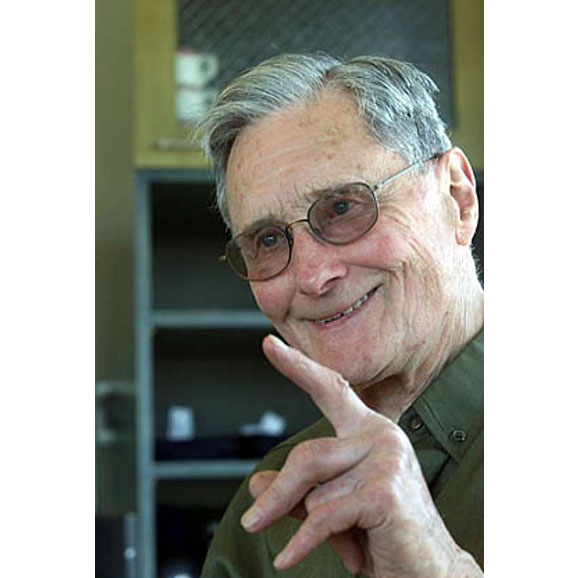
On August 29th, 2007, Mr. Alfred Peet unfortunately passed away. All the major media in the United States, such as the New York Times, the Washington Post and CNN, all recalled the outstanding contribution of a generation of fine coffee godfathers to the American coffee industry. It can be seen that Mr. Alfred Peet has an epoch-making great influence in the American coffee industry.
Does Peet's have a future in China?
The editor has no conclusion on this question for the time being.
Compared with the "third wave of coffee", Peet's and Starbucks are often called the representatives of the "second wave of coffee", but after years of personnel changes and market sharpening, no one can guarantee that the current Peet's can still adhere to the spirit and quality of its founders.
The editor has not had a chance to go to the United States to taste Peet's 's coffee, but I still have a doubt: the degree of boutique of Peet's may not be high.
One truth is obvious: quality is inversely proportional to quantity. How to strike a balance between commercialization and boutique, even Peet's has not yet found the answer. As a "boutique coffee shop", even if Peet's, as a "boutique cafe", has acquired "intellectuals" and "tree stump city" and can open more than 200 stores in the United States, compared with Starbucks, Peet's has entered the coffee market of Starbucks nearly 20 years later, the future Peet' Can we grab a piece of cake between Starbucks and many local companies in China?
We'll see.
Important Notice :
前街咖啡 FrontStreet Coffee has moved to new addredd:
FrontStreet Coffee Address: 315,Donghua East Road,GuangZhou
Tel:020 38364473
- Prev

Handmade Paper Cafe Kradas Cafe | amazing paper carving art Cafe
Exchange of professional baristas Please pay attention to the clear blue sky of the coffee workshop (Wechat official account cafe_style), away from the noisy lane, green and green slowly follow the comfortable speed, riding the midsummer sun, walk into a white and green European garden cafe, operators have been operating the paper manufacturing industry for more than 20 years, most of the paper products here are exported to foreign orders, so
- Next

On the evolution of cafes in Hong Kong
Professional baristas please follow the coffee workshop (Wechat official account cafe_style) stroll through Causeway Bay. In just a few months, several chain groups have hung up the opening promotion of their flagship boutique coffee stores. Rent giant shops in a busy city full of tourists to promote fine coffee that advocates fine taste. One fast and one slow, the contrast is strong. Traditional European cafes were regarded by people at that time as outside bars.
Related
- What documents do you need to go through to open a coffee shop? coffee shop coffee shop certificate processing process
- How to purchase Coffee beans in small Cafe how to choose a suitable supplier for domestic Coffee supply Company
- How to drink Starbucks Fragrance White Coffee? how to make Australian White Coffee? what Italian coffee beans are recommended?
- The Story of Flora Coffee: the name of Flora Coffee Bean and the implication of the Flowers on Florna Coffee
- How much does a cup of coffee cost? How much is the profit of a cup of coffee? What is the profit of the coffee shop in a year?
- Yunnan small Coffee, known as "fragrant Coffee", introduces the characteristics of Alpine Arabica Coffee producing areas in Yunnan, China
- 2023 latest Starbucks full menu price list how much is a cup of Starbucks coffee what is better to drink the most popular hot and cold drinks recommended
- Starbucks different kinds of Coffee Price list Starbucks menu 2023 Top Ten Best drinks in Starbucks
- Starbucks Spring praise Comprehensive matching Coffee Bean theme Story Packaging implication and taste description
- The cost of a cup of coffee latte American coffee cost price and selling price

